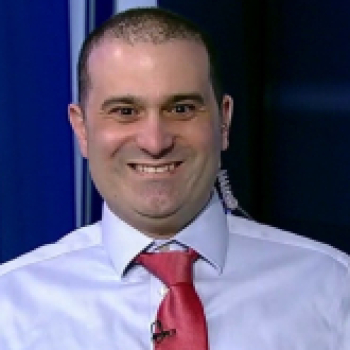
- All Instrument Types
- Indices
- Equities
- ETFs
- Funds
- Commodities
- Currencies
- Crypto
- Bonds
- Certificates
Please try another search

Which stocks will surge next?
Weekly Outlook: Ugly Start For Markets, ECB Takes Central Bank Torch

This week saw a very ugly start, with Asian stocks and global share futures tumbling, as following the inability of the OPEC+ group to agree on new production cuts, Saudi Arabia decided to hike its crude production and to cut its official selling price. As for oil prices themselves, Brent and WTI are now trading 26.42% and 27.80% down from their Friday closings. Fears with regards to the coronavirus’s economic impact heightened, also weighing on investors’ morale. On Thursday, the ECB decides on interest rates and it would be interesting to see whether it will follow the footsteps of the RBA, the FOMC and the BoC, in cutting rates.
Monday appears to be a relatively light day in terms of economic releases. We only get second tier indicators. During the European morning, we have Germany’s industrial production, current account and trade data, all for January. IP is forecast to have rebounded 1.7% mom, after tumbling 3.5% in December, while the nation’s current account surplus is forecast to have narrowed to EUR 20.1bn from EUR 29.4bn. The trade surplus is also anticipated to have narrowed, to EUR 15.4bn from EUR 19.2bn. Later in the day, both Canada’s housing starts and building permits, for February and January respectively, are expected to have slowed.
Having said all that though, the week did not start as quietly as the calendar suggests. Asian stock markets and global share futures tumbled at the opening as, following the breakdown of a new deal between major OPEC and non-OPEC oil producers, Saudi Arabia decided to hike its crude production and to cut its official selling price. The decision came after Russia denied joining deep production cuts proposed by the OPEC in order to stabilize the energy market hit by the economic effects of the coronavirus. Among the G10 currencies, the oil-related NOK and CAD were found to be the main losers, followed by the risk-linked Aussie and Kiwi. The main gainers were the safe-havens JPY and CHF, followed by the euro. As for oil prices themselves, Brent and WTI are now trading 26.42% and 27.80% down from their Friday closings.
Speaking about the virus, although cases slowed somewhat on Sunday, deaths accelerated sharply, while the Italian government ordered a lockdown of large parts of the north of the country, including Milan. The market reaction suggests that investors are unconvinced that the virus can been contained soon, something that heightened further recession fears.
All this adds more credence to our view, that eventually the economic wounds could well drive into Q2, and absent any headlines that a vaccine could be introduced soon, equities and risk-linked assets are likely to continue tumbling as investors seek shelter in safe-havens, like bonds, the yen, the Swiss franc, and the euro. Following the latest stock market rout, US Treasury yields continued to slide, with the 10-year rate hitting a new record low of 0.477, after closing at 0.773 on Friday, while according to the Fed funds futures, market participants now expect the FOMC to cut by 75bps at its upcoming gathering scheduled for next week.
On Tuesday, during the Asian morning, Australia’s NAB business confidence index for February is coming out, but no forecast is available. Last week, the RBA kickstarted a coordinated effort by major central banks to fight the economic damages of the fast-spreading coronavirus. The Bank cut interest rates by 25bps to a new record low of 0.50%, and remained willing to ease further if needed. In January, the NAB business confidence index stood at -1. Thus, bearing in mind that the virus’s spreading accelerated in February, we see the case for the index to slide further into the negative territory. This will add more credence to the view that further cuts by the RBA may be needed. According to the ASX 30-day interbank cash rate futures implied yield curve, another quarter-point cut is nearly fully priced in for the April meeting.
From China, we get the CPI and PPI rates for February. The CPI rate is forecast to have declined to +5.2% yoy from +5.4%, while the PPI one is anticipated to have turned back negative. Namely, it is expected to have fallen to -0.3% yoy from +0.1%. On Saturday, data showed that the nation’s trade surplus turned into a deficit in February, which combined with a slump in inflation may increase concerns that the virus’s economic effects are larger than previously estimated, and thereby prompt investors to reduce further their risk exposure.
During the European morning, we get more inflation data for February, this time from Norway. Both the headline and core CPIs are expected to have slowed to +1.4% yoy and +2.3% yoy from +1.8% and +2.9% respectively. The headline rate would be much lower than the Norges Bank latest forecast for the month, which is at 1.9%, but the core one will be much higher than its respective estimate of +1.8%. Under normal circumstances, such prints would have been unlikely to alter policymakers’ view that interest rates are likely to stay at the present level in the coming period. Nonetheless, with central banks worldwide easing their respective policies in order to prevent a global recession due to the effects of the coronavirus, Norges Bank officials may decide to leave aside economic data and follow the footsteps of the RBA, the FOMC and BoC. The sharp tumble in oil prices today could also be a reason for lower interest rates.
From the Eurozone, we get the final GDP print for Q4, which is expected to confirm its second estimate, namely that economic growth in the Euro area has slowed to +0.1% qoq from +0.3% in Q3. The bloc’s employment change for the same quarter is also due to be released and the forecast points to an acceleration to +0.3% qoq from +0.1%.
On Wednesday, the main event is likely to be the UK Budget. Actually, this is the Autumn budget that was scheduled for November 2019, but was delayed due to the fact that general elections were called. Under normal circumstances, this time of the year, we have the Spring Statement, which is an update on the numbers. In any case, this would be the first Budget of the new Chancellor Rishi Sunak, who replaced Sajid Javid back on February 13th. Javid’s stance over spending was seen as more cautious than Sunak’s, and thus, it would be interesting to see how expansionary the new budget will be. In the midst of the domestic economic slowdown and fears over the coronavirus impact, decent fiscal support may lessen the need for the BoE to proceed with aggressive easing as the FOMC and the BoC did, and thereby prove supportive for the pound.
The UK GDP for January, as well as industrial and manufacturing production data for the month are coming out, but they may get overshadowed by the budget announcement. Just for the record, economic growth is expected to have slowed to +0.2% mom from +0.3%, while the yoy rates of IP and MP are forecast to have slid further into the negative territory. Specifically, they are anticipated to have declined to -2.5% yoy and -3.3% yoy respectively, from -1.8% and and -2.5%. The nation’s trade balance is also coming out and expectations are for December’s surplus to have turned into deficit in January.
From the US, we get the CPIs for February. The headline rate is expected to have declined to +2.2% yoy from 2.5%, while the core rate is anticipated to have remained unchanged at +2.3%. Under normal circumstances, CPI rates above the Fed’s 2% inflation aim would have allowed officials to remain sidelined, despite their favorite metric being the core PCE rate which runs below 2%. Having said that though, after last Tuesday’s double cut, Fed Chair Powell highlighted that the fundamentals of the US economy remain strong, adding that they decided to cut due to the risks the coronavirus poses to activity. Thus, we don’t expect US domestic data to alter expectations around the Fed’s future course of action.
On Thursday, the spotlight is likely to turn to the ECB monetary policy decision. Market participants are confident that this Bank will follow the footsteps of the RBA, the FOMC and the BoC in easing policy in order to safeguard the global economy from the effects of the coronavirus. That said, expectations are for just a 10bps cut in the deposit rate. Having that in mind, for the euro to give back some of its recent gains, a bolder action is needed, but we see that as unlikely.
With the Euro area deposit rate already deep in the negative zone, the ECB has much less room to cut rates compared to other major central banks. This may have been one of the catalysts behind the euro’s latest rally. The other one could have been the unwinding of carry trades, as the common currency appears to have been used as a vehicle for such trades. In any case, we believe that the ECB will indeed cut by 10bps, and repeat that it remains willing to use all its tools if needed, but absent any deeper cut, or strong signals that this could happen at one of the upcoming meetings, we expect the euro to continue outperforming its US counterpart. Even if the ECB decides to use other easing tools, besides rate cuts, any such action cannot be compared to the elevated market expectations for a triple cut at next week’s FOMC gathering.
As for Thursday’s economic indicators, during the European morning, Sweden’s inflation data are coming out. The headline CPI is forecast to have accelerated to +1.7% yoy from +1.3%, but the CPIF rate is anticipated to have ticked down to +1.1% yoy from +1.2%. We believe that, this time around, inflation may not prove so determinant with regards to the Riksbank’s policy plans. Since last week, central banks around the globe have been easing policy in a coordinated action to safeguard economic activity from the effects of the coronavirus and this means that the world’s oldest central bank may not hesitate bringing interest rates back into the negative territory.
Eurozone’s industrial production for January and the US PPIs for February are also due to be released. The Euro area IP is expected to have rebounded 1.3% mom after tumbling 2.1%, which while drive the yoy rate up to -3.4% from -4.1%. With regards to the US PPIs, the headline rate is anticipated to have declined to +1.8% yoy from +2.1%, while the core one is forecast to have held steady at +1.7%.
Finally, on Friday, Germany releases its final CPI data for February, but as it is usually the case, they are expected to confirm their preliminary estimates. In the US, the preliminary UoM consumer sentiment index for March is due out and the forecast points to a decline to 65.0 from 101.0 in February.
Related Articles

US 10-Year moved sharply higher on surprise GDP report. What's next? Original Post

Facebook’s Meta (NASDAQ:META) went on a 10% freefall yesterday, even after the company announced better-than-expected earnings. This being said, yesterday’s selloff...

Here is a trillion (dollar) reasons why the US economy is likely to hold up until elections: between now and then, Yellen is likely to drain the Treasury General Account (TGA) and...
Are you sure you want to block %USER_NAME%?
By doing so, you and %USER_NAME% will not be able to see any of each other's Investing.com's posts.
%USER_NAME% was successfully added to your Block List
Since you’ve just unblocked this person, you must wait 48 hours before renewing the block.
I feel that this comment is:
Thank You!
Your report has been sent to our moderators for review





Add a Comment
We encourage you to use comments to engage with other users, share your perspective and ask questions of authors and each other. However, in order to maintain the high level of discourse we’ve all come to value and expect, please keep the following criteria in mind:
Enrich the conversation, don’t trash it.
Stay focused and on track. Only post material that’s relevant to the topic being discussed.
Be respectful. Even negative opinions can be framed positively and diplomatically. Avoid profanity, slander or personal attacks directed at an author or another user. Racism, sexism and other forms of discrimination will not be tolerated.
Perpetrators of spam or abuse will be deleted from the site and prohibited from future registration at Investing.com’s discretion.